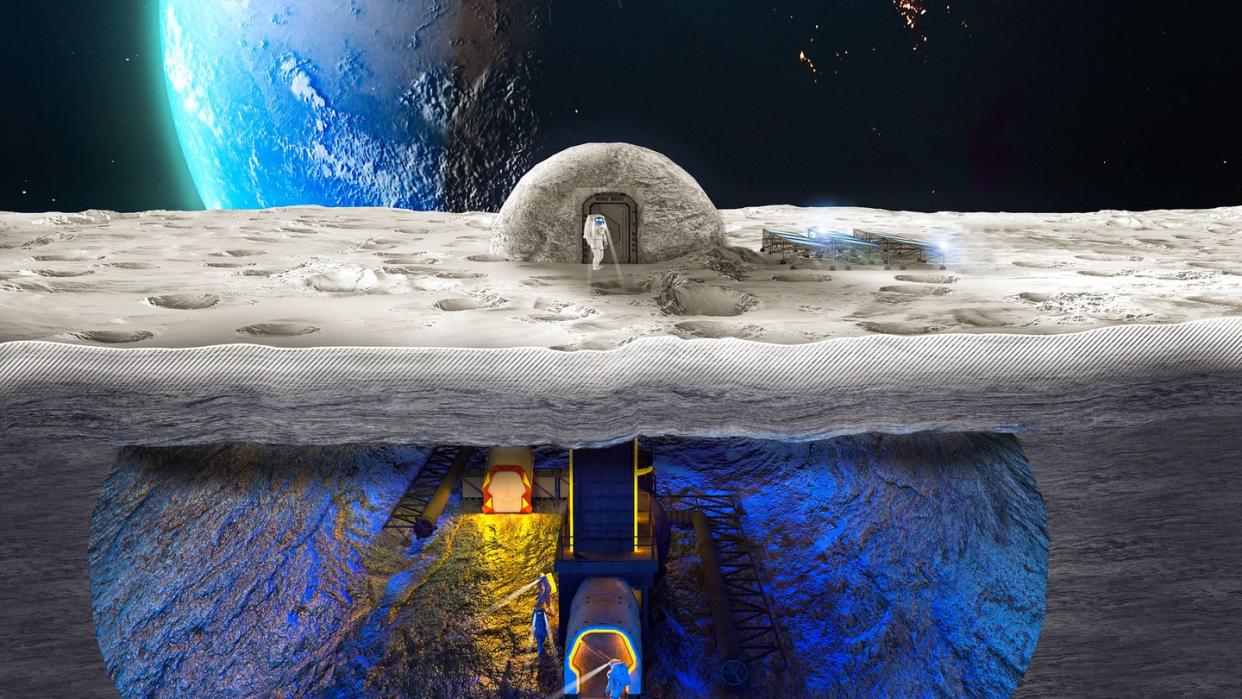Scientists Found Lava Tubes on the Moon. They Could Very Well Be Our Future Homes.

"Hearst Magazines and Yahoo may earn commission or revenue on some items through these links."
Scientists have discovered lava tubes just under the surface of the Moon.
The team used radar to answer a question scientists have been asking for over 50 years.
If we’re lucky, these tubes could end up being the best place for humans to build the infrastructure that will protect astronauts on long-haul lunar missions.
If humans are going to exist on the surface of the Moon for an extended period of time—and we’d very much like to—we’re going to need to protect ourselves. As evidenced by the intense spacesuits that all Moon-faring astronauts have to wear, it’s not exactly a hospitable place for people to hang out.
And it goes further than just the lack of air (though, that’s definitely the most immediate problem any visitors face). Temperatures can drop to around -280 degrees Fahrenheit on the dark side and reach as high as 260 degrees Fahrenheit on the light side, and there’s no atmosphere to shield the surface from things like meteorites and radiation.
Basically, we need to go underground. And according to a new study just published in Nature Astronomy, that might be an option. Because, ladies and gentlemen, we have lava tubes.
“These caves have been theorized for over 50 years,” Lorenzo Bruzzone, one of the authors of the study, said in a press release, “but it is the first time ever that we have demonstrated their existence. This discovery provides the first direct evidence of an accessible lava tube under the surface of the Moon.”
There are a few keywords in that sentence, but let’s start with “lava tube.” The Moon might be entirely volcano-less today (though there may be some magma still present deep down near the lunar core), but a long, long time ago, it was actually volcanically active. Today, you can see evidence of that tumultuous past in the maria on the lunar surface—big dark spots that we originally thought could have been actual oceans, but were actually found to be the remnants of lava fields.
This lava tube was found in one of those maria—specifically, the Mare Tranquilitatis, which is right underneath what is traditionally called the Man in the Moon’s left eye (depending on who you ask).
“In 2010, as part of the ongoing LRO NASA mission, the Miniature Radio-Frequency (Mini-RF) instrument acquired data that included a pit in Mare Tranquilitatis,” Bruzzone explained. “Years later we have reanalysed these data with complex signal processing techniques we have recently developed, and have discovered radar reflections from the area of the pit that are best explained by an underground cave conduit.”
And that brings us to the second key word: accessible. The discovery of this lava tube system is certainly exciting for many reasons, but chief among them is for the protection they could someday provide astronauts intending to stay on the Moon for long periods of time. If we could manage to build habitable infrastructure for them in these pre-existing tunnels, we could shield lunar visitors from many of the harshest conditions they could face without having to, say, figure out the science behind meteorite-proof houses.
As always, however, there’s still plenty more to investigate. For instance, just because we found lava tubes under the Mare Tranquilitatis doesn’t mean that’s the best place to eventually set up shop. “A complete survey of all known lunar pits would allow us to identify the most promising accesses for subsurface lunar exploration and provide information on the potential for installing [a] human lunar base in environments protected from cosmic radiation and with stable temperatures,” the authors wrote in the study.
And, if we’re lucky, the same radar technique used to discover the lunar lava tubes could be used elsewhere in our solar system to similar effect. “The same method could also be used on Mars,” the authors wrote, “for which more than 1,000 cave entrances have already been identified, to provide unprecedented information on potential astrobiological targets for future missions.”
Next stop: underground.
You Might Also Like
